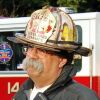I was recently privileged to be invited to the U.S. Fire Administrator’s 2022 Summit on Fire Prevention and Control. Now to be honest, by nature of my age and refusal to go away, I’ve been honored to participate in many of these “where are we going” national forums and discussions on the future of the fire service. Some have mattered, and some have not.
So, before I detail more about this one, I want to share one example from the event where I think we may be getting it right. While there are many common challenges to all aspects of the fire service, one comment provided me with a real “aha moment.”
During introductions of the leadership panel, National Volunteer Fire Council First Vice-Chair Kevin Quinn commented about some differences in the fire service, specifically the very real volunteer challenges these days. To this IAFF General President Ed “Edzo” Kelly responded, “I don’t think we have that many differences, and we certainly have a whole lot of common challenges that we will work on together.” And Kevin smiled and affirmed Edzo’s comments.
BAM!
The fact that the leader of the largest firefighters’ labor union and the leader of the nation’s volunteer firefighters publicly agreed that solving our many common problems will require a team effort is a phenomenal place to start.
Common ground issues
Just take a look at the primary challenges facing America’s firefighters today (and in the future):
- Training and PPE for those working in the wildland/urban (suburban) interface
- Recruitment and retention
- Occupational cancer
- Firefighter behavioral health
- Elevation of the fire service – federal policy development and prioritization
- Codes and standards to protect the public and firefighters
If you are issued bunker gear, every one of the above issues impacts you. Every single one.
Recruitment: The volunteer fire service is in serious trouble, but we are also seeing measurably less interest in people applying to be career firefighters.
Retention: Keeping volunteers with increased call load, time restraint and requirements? In so many areas, career firefighters are moving to other departments or leaving the service all together for a variety of reasons, including working conditions, pay and leadership challenges.
Behavioral health: Firefighter wellness, mental health, PTSD and suicide – hardly a strictly career or volunteer issue.
Cancer: There is not a firefighter in America, career or volunteer, who doesn’t know another brother or sister who has or had … or is dealing with it themselves.
Hopefully I’ve made my point, as Edzo certainly made his.
If the leaders of the primary fire service organizations – IAFF, IAFC, NVFC, NFPA, NFFF and CFSI, and many other organizations leaders who were represented – maintain their commitment to actually work together, under Dr. Moore-Merrell’s support and energy, and commit to actually work together, they will (without question) be more powerful than if they work by themselves, and they will impact the critical issues threatening our nation’s fire service.
Breaking down our challenges
In 1947, President Harry S. Truman convened the first National Conference on fire prevention, life safety and control activities. Seventy-five years later, the USFA continued this tradition with this Summit on Fire Prevention and Control.
The summit focused on the nation’s fire problem and the needs of the fire and emergency medical responders. It served as an opportunity to engage national leadership, evaluate the state of science, and collaborate to set forth actionable steps that can be taken. There are numerous well-defined and organized working groups that are breaking down the issues and developing plans to go forward. This is NOT a “meet and go” scenario where a report sits on a shelf. This is a “meet, work and do more work” scenario until realistic and funded solutions are identified. Multiple solutions to some very tough problems. Further, the Summit was only the beginning of work that will lead to reports and deliverables at the 2023 U.S. Fire Administrator’s Summit, which is to be held annually during October Fire Prevention Week.
During the summit, the energy was palpable by participants eager to actually take on these issues, because every one of them knows these are very real problems. And while we had President Joe Biden join us and address the group virtually, his positive and supportive words of encouragement were great, no different than a highly motivating coach – it all comes down to how we perform together moving forward.
Imagine your favorite band performing but each musician playing “their own way.” That is often what our fire service looks like. Sure, it may sound good on occasion (especially during a solo), but imagine how great it would sound if the musicians practiced together. While each musician is different in their own sound (just like the differences among career, combination, volunteer, urban, rural, suburban departments, etc.), when they come together, they will almost always get a standing ovation, and cheers for more.
That’s the very doable potential of the U.S. Fire Administrator’s 2022 Summit on Fire Prevention and Control, as long as those involved focus not only on their own issues but also the big national picture so that we all benefit – and the public, too. There is a whole lot of work ahead, and if we stay focused and genuinely work together, we will see a much stronger nationally united fire service, with some great sounding music.













